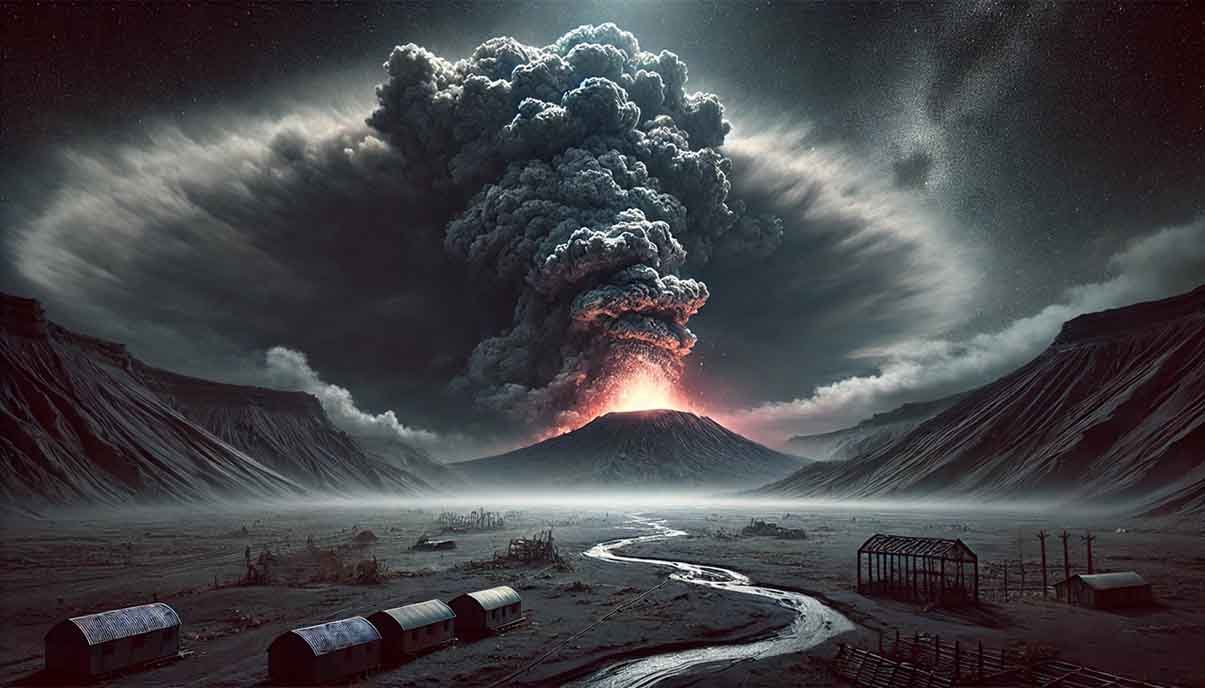The Looming Threat of Mega-Eruptions
Scientists warn that the unrecognized risk of major volcanic eruptions calls for attention and that the earth might suffer a catastrophic event within this century. Published in the journal Nature Communications Earth & Environment, a research revealed a concerning figure: before the year 2100, there is a 1-in-6 probability of a major volcanic eruption.
Such eruptions—like the one from Mount Tambora in Indonesia in 1815—may have terrible effects. Tambora’s eruption set off the famed “Year Without a Summer,” a worldwide climatic oddity defined by extreme cooling, failed crops, and general hunger. Along with upsetting world agriculture, the disaster helped to cause mass migration and economic downturn.
Professor Michael Cassidy from the University of Birmingham noted, “While attention is often focused on other natural disasters like hurricanes or earthquakes, volcanic eruptions can be equally devastating and have far-reaching consequences that are felt for decades.”
________________________________________
How Volcanic Eruptions Impact the Globe
When a supervolcano emits, it discharges immense amounts of debris and gasses into the environment. Sulfur dioxide, a significant producer, joins with water fume to create sprayers, which can hinder daylight and decrease worldwide temperatures decisively.
As indicated by the U.S. Geological Survey (USGS), such environmental disturbances can prompt:
- Serious Environmental Change: A major decrease in temperatures, harming biological systems and horticulture.
- Monetary Unsteadiness: Yield disappointments coming about to taking off food costs and more prominent desire.
- Wellbeing Emergencies: Fine volcanic debris remaining palpably can cause respiratory illnesses and defile water frameworks.
The likely outcomes could match those of the 1783 Laki ejection in Iceland, which set off disastrous weather conditions changes across Europe, crop disappointments, and a huge number of passings.
________________________________________
Current Monitoring and Preparedness: A Global Blind Spot
Despite these hazards, monitoring of volcanic activity remains dangerously poor. Only a portion of the world’s active volcanoes—estimated at over 1,500—are monitored by modern technologies. Many volcanoes in poor nations lack even rudimentary observation, leaving millions of lives at risk.
Professor Chris Kilburn of University College London underlines, “The disparity in monitoring is a critical vulnerability. Investing in global volcanic monitoring systems is not merely a scientific need but a humanitarian imperative.”
Areas of High Risk
Locales with huge populace numbers close to dynamic volcanoes are particularly helpless. Models include:
- The Pacific Ring of Fire: Home to more than 75% of the world’s dynamic volcanoes, this area includes nations including Indonesia, Japan, and the Philippines.
- Iceland: A middle for volcanic movement that has seen huge ejections lately, harming general air transport and nearby networks.
- The Andes Locale: Extending across South America, this area contains urban communities like Quito, Ecuador, which are close to dynamic volcanic zones.
________________________________________
A Human-Centered Perspective
History is overflowing with instances of networks following through on a heavy cost for volcanic emissions. In 1985, Colombia’s Nevado del Ruiz spring of gushing lava emitted, releasing lahars that covered the town of Armero and killed more than 23,000 people. Overcomers of such events frequently experience lifetime injury, separation, and financial trouble.
Current volcanic emissions likewise present culture and monetary worries. The 2010 Eyjafjallajökull emission in Iceland deferred global air traffic, influencing a great many travelers and causing billions in monetary harms.
Nonetheless, people group living close to dynamic volcanoes have showed amazing strength. Iceland, for example, has utilized volcanic risks into open doors, like geothermal energy advancement and the travel industry. An dweller close to the new emission at Fagradalsfjall said, “We’ve learned to live with the land’s unpredictable nature—it’s part of who we are.”
________________________________________
Urgent Steps to Mitigate Risk
To prevent future damage, experts and politicians advocate the following measures:
- Expand Monitoring Networks: Increase the number of active volcanoes under regular supervision, particularly in undeveloped regions.
- Establish Early Warning Systems: Deploy real-time alarm systems for adjacent areas to ensure fast evacuations.
- Educate Communities: Public awareness efforts can save lives by teaching people how to respond to volcanic events.
- Invest in Global Cooperation: Establish international frameworks for exchanging data, technology, and resources to address the transnational aspect of volcanic hazards.
________________________________________
Conclusion: A Call to Action
The threats posed by major volcanic eruptions are not hypothetical—they are inevitable. As our interconnected society becomes more prone to global shocks, prioritizing volcanic preparedness is not just sensible but imperative. Ignoring these warnings could leave humanity unprepared for a disaster that could change the course of history.
Sources:
- Nature Communications Earth & Environment
- U.S. Geological Survey (USGS)
- Times of India
- Wikipedia: Volcanic Hazards
- Condé Nast Traveler

